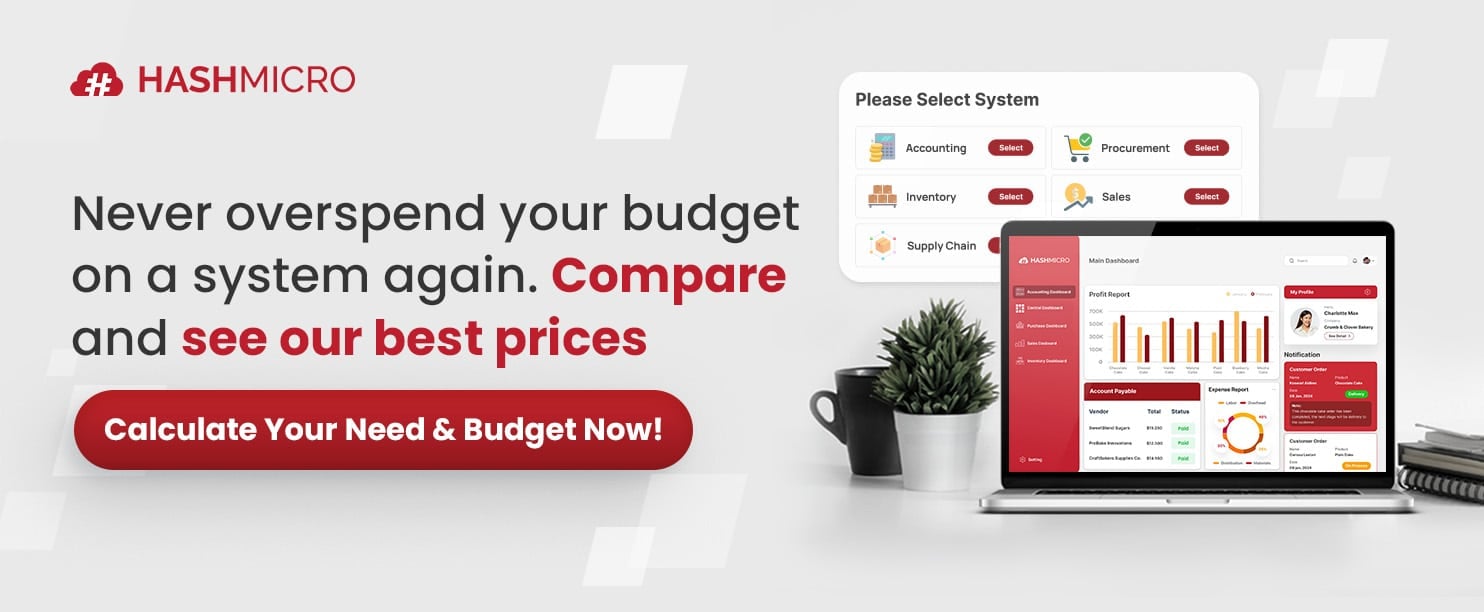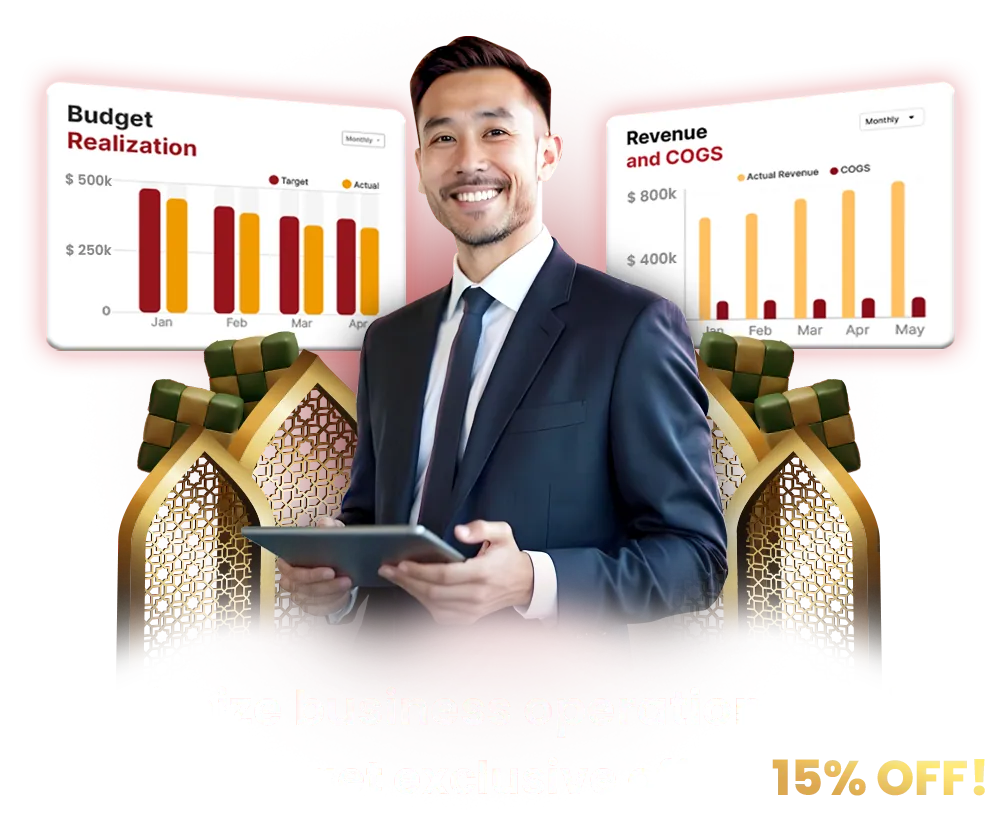A profit and loss forecast is key to steering your business through uncertain waters. Yet, most CFOs face challenges that go beyond just time or resource constraints.
What are the challenges, then? According to Deloitte, 84% of CFOs say their biggest hurdle is not the lack of capacity; it’s the ability to quickly model business decisions, respond to external events, and plan for disruptions.
Meanwhile, a study involving 159 Malaysian firms between 2015 and 2019 found that using three-year lagged cash flow models significantly improved the accuracy of profit and loss forecasts.
So, what’s the important takeaway from the data? Accurate forecasts and good models can enhance financial planning by relying on historical patterns, not just short-term assumptions.
Therefore, in this article, we’ll explore what a profit and loss forecast is, why it matters, and how to use it as a strategic tool.
Key Takeaways
|
Table of Content
Content Lists
What is Profit and Loss Forecast?
A profit and loss forecast outlines a company’s financial performance over a specific period by presenting its income, expenses, and net profit or loss. Every financial transaction has an impact, and the profit and loss statement captures whether these activities generate a gain or result in a loss.
As part of 3-way financial forecasting, the profit and loss statement, also known as the income statement, is a key report that records the company’s financial transactions along with the resulting profits or losses.
It also includes non-cash items, such as appreciation in investment value or depreciation of fixed assets like machinery and vehicles. These entries are reflected in the profit and loss statement, even though no cash is exchanged.
On the other hand, the P&L statement excludes certain cash transactions that do not lead to any profit or loss. For example, purchasing a vehicle worth MYR 50,000 for the same amount is a cash outflow, but since there’s no gain or loss, it won’t appear on the income statement.
The Importance of Profit and Loss Forecast for Business
The Profit and Loss (P&L) Forecast plays a key role in helping businesses manage their finances more effectively, as well as being useful in accounting automation. Here’s how it supports business growth and sustainability:
1. Informed Strategic Decisions
Forecasting income and expenses allows business owners to plan ahead and make well-informed decisions. For example, if a retail business anticipates higher sales before the festive season, the owner may decide to stock up on inventory early to meet demand.
On the other hand, if the forecast points to slower sales, the owner might hold off on expansion plans or increase marketing efforts to drive more traffic and revenue.
It’s worth noting that handling large volumes of goods (and consequently, large data) might be overwhelming for retailers. So, they often implement retail accounting software that’s specifically made to manage retail stores’ finances.
2. Cash Flow Planning
A steady cash flow is essential to daily operations. With a P&L forecast, business owners can anticipate when revenue will be received and when expenses need to be paid.
For instance, if an entrepreneur expects to receive a client payment in the first week of the month and knows a utility bill is due in the second week, they can schedule payments accordingly to avoid cash flow issues.
3. Setting Financial Goals and KPIs
The P&L forecast helps businesses establish clear financial targets. Suppose the forecast projects an annual profit of MYR 60,000. In that case, the business can set a monthly revenue target of MYR 5,000 to stay on track.
It also enables monitoring of key performance indicators (KPIs), such as gross profit margin or expense-to-revenue ratios. These metrics offer valuable insights into whether the business is meeting its goals or needs to adjust strategies to boost profitability.
4. Gaining Access to Funding
Banks and investors often require a detailed profit and loss forecast before approving loans or funding. For instance, if a new restaurant owner is applying for a MYR 200,000 loan to launch a second outlet, a well-prepared P&L forecast strengthens the application.
The document should outline projected sales from menu items, estimated costs for ingredients, and staffing expenses. Without a clear and realistic forecast, securing financial support can be difficult.
5. Uncovering Opportunities and Mitigating Risks
A P&L forecast enables business owners to identify both potential challenges and areas for growth. For example, if a construction company notices unusually high labour costs in the forecast, management may take steps to address inefficiencies.
This could involve reorganising work schedules or renegotiating supplier terms. On the flip side, if the forecast highlights growing demand for a particular product or service, the business may choose to ramp up marketing efforts or scale operations to maximise the opportunity.
The Components of Profit and Loss Forecast
The P&L statement provides a summary of a company’s financial performance, which consists of the following components:
- Revenue/Sales: This refers to the total income earned from selling products, offering services, or conducting core business operations over a given timeframe.
- Cost of Goods Sold (COGS): These are the direct costs involved in producing goods or delivering services, including raw materials, labour, and manufacturing overhead.
- Gross Profit: Calculated by subtracting COGS from total sales, gross profit reflects the earnings before deducting operating expenses.
- Operating Expenses: These are the day-to-day expenses not directly tied to production, such as rent, utility bills, and administrative costs.
- Operating Profit: This figure is derived by subtracting operating expenses from gross profit and shows how much the company earns from its main business activities.
- Other Income and Expenses: This section includes non-core items such as gains or losses from asset sales, interest income or charges, and taxes.
- Net Profit or Loss: The final figure after accounting for all income and expenses, indicating whether the business earned a profit or incurred a loss during the period.
The Difference between General Forecast and Profit and Loss Forecast

In business, the terms “profit forecast” and “profit and loss forecast” are often used to mean the same thing. Both refer to a financial projection that estimates how much profit or loss a company expects to generate over a certain period, typically over the course of a year.
So, how is a profit and loss forecast different from a general business forecast?
The main distinction lies in their focus and level of detail.
A profit and loss forecast specifically focuses on the company’s financial performance. It provides a detailed view of expected profitability, using standard accounting principles.
This forecast includes projected revenue, cost of goods sold, operational expenses, and other factors that directly impact the company’s net profit. Essentially, it shows how much the business expects to earn compared to what it plans to spend.
Meanwhile, a general forecast takes a broader approach. While it may include financial projections, it also covers other strategic elements—such as anticipated market trends, changes in customer preferences, industry developments, and potential technological advancements.
How to Calculate Profit and Loss Forecast
Creating a profit and loss forecast is an essential part of financial planning for any business. It involves several steps to help you make accurate and reliable projections. Below is a simplified example of how to prepare a P&L forecast, along with the steps to calculate it:
1. Define the Forecast Period
Start by setting the time frame for your forecast—this could be monthly, quarterly, or annually. For instance, let’s say you want to forecast your café’s financial performance over a one-year period to keep things manageable and aligned with your business cycle.
2. Review Past Revenue Data
Look at your previous sales figures to establish a foundation for your projection. Suppose your café generated MYR 480,000 in total revenue last year. Use this as a reference point. Analyse any trends—for example, did sales increase during festive months or school holidays?
Historical data helps you identify revenue patterns and improve the accuracy of your forecast.
3. Project Revenue for the Coming Period
Using your historical data and expected market trends, estimate your revenue for the forecast period. If your café has been growing at around 6% annually, you could project MYR 508,800 in revenue for the coming year.
If you’re also launching a second outlet, you might expect an additional MYR 100,000 in sales, bringing the total projected revenue to MYR 608,800.
4. Estimate Cost of Goods Sold (COGS)
Next, calculate your projected COGS based on past ratios. If your COGS typically accounts for 40% of revenue, multiply MYR 608,800 by 40%.
That would give you a COGS estimate of MYR 243,520. This includes costs directly tied to delivering your product or service—such as ingredients, packaging materials, and direct wages.
5. Estimate Operating Expenses
Next, outline the expected operating expenses for the forecast period. These include both fixed and variable costs such as staff salaries, rental, utility bills, and marketing efforts. For example:
- Salaries: MYR 120,000
- Rent: MYR 30,000
- Utilities: MYR 10,000
- Marketing: MYR 15,000
Total operating expenses would come up to MYR 175,000. These are costs that will be incurred regardless of how much you sell.
6. Work Out the Gross Profit
To calculate gross profit, subtract the cost of goods sold (COGS) from your total revenue. Based on our earlier example:
- Revenue: MYR 608,800
- COGS: MYR 243,520
- Gross Profit = MYR 608,800 – MYR 243,520 = MYR 365,280
7. Find the Operating Profit
Now subtract your operating expenses from the gross profit to get your operating profit:
- Gross Profit: MYR 365,280
- Operating Expenses: MYR 175,000
- Operating Profit = MYR 365,280 – MYR 175,000 = MYR 190,280
8. Calculate the Net Profit
Lastly, deduct other expenses like taxes and interest to arrive at the net profit:
- Operating Profit: MYR 190,280
- Taxes: MYR 25,000
- Interest: MYR 10,000
- Net Profit = MYR 190,280 – MYR 25,000 – MYR 10,000 = MYR 155,280
By going through these steps, you’ll have a clear and structured profit and loss forecast that gives you a better handle on your financial planning.
Do you know that using reliable accounting software can simplify this entire process by generating accurate P&L reports in minutes? Thus, you can save more time in the end! If you’re curious how much a digital accounting system costs, you can click on the banner below!

How to Use P&L Forecast for Better Decision-Making
To turn your profit and loss forecast into a powerful decision-making tool, consider the following best practices:
1. Regularly Track and Compare Actual Results
Continuously monitor your actual financial performance and compare it with the forecast. This helps you identify any deviations—whether you’re overperforming or falling short—and highlights areas that require attention or adjustment.
2. Investigate the Reasons Behind Variances
Look deeper into why your actual results differ from the forecast. Assess whether your assumptions about sales, expenses, or market conditions were off. For example, unexpected increases in supply costs or shifts in customer demand could affect your numbers.
3. Use Scenario Planning and Sensitivity Analysis
Explore different financial scenarios to see how various changes—like pricing adjustments, slower sales, or increased marketing spend—might impact your bottom line.
Sensitivity analysis can help you gauge how sensitive your profits are to changes in specific variables, helping you prepare for both risks and growth opportunities.
4. Realign Financial Goals with Strategic Plans
Once you’ve analysed your results and considered different scenarios, update your financial targets to stay in sync with your business strategy.
This step keeps your decision-making grounded in data, so that your plans remain achievable and relevant in a changing environment.
Achieve Accurate Forecasting with HashMicro Accounting Software

HashMicro Accounting Software empowers businesses with smarter, faster, and more accurate financial management, especially when it comes to budgeting and profit & loss forecasting.
Thanks to its powerful automation features, you can eliminate repetitive manual tasks and record transactions in real-time with a high level of accuracy. It’s like having a reliable financial partner by your side every step of the way.
What sets HashMicro apart is its ability to integrate data from multiple sources, giving you a complete, real-time view of your financial health. Every detail counts; no data is wasted or overlooked.
And the best part? You can explore it all through a free demo and see how seamlessly the system fits into your business workflow.
Key Features That Elevate Your Budgeting and Forecasting:
- Profit & Loss vs Budget & Forecast: Compare actual profit and loss with projected budgets to evaluate performance. Spot variances early and make timely adjustments to stay on track.
- Cash Flow Reports: Visualize the movement of cash in and out of your business. This helps ensure sufficient liquidity and better prepares you for upcoming financial obligations.
- Forecast Budget: Build smart budgets using historical data and trends. Use this feature to anticipate revenue and expense shifts, and align your strategies accordingly.
- Financial Ratio Analysis: Gain deeper insight into your company’s financial health with real-time ratio calculations. This enables better strategic decisions and pinpoints areas that need attention.
- Bank Integration & Auto Reconciliation: Sync your financial records directly with bank transactions. This reduces human error and ensures your statements are always accurate, while saving you precious time.
- Multi-Level Analytics: Break down performance by department, product, or region. Identify which areas drive growth and which need improvement, all in just a few clicks.
With these intelligent tools, your business can go beyond basic reporting and take control of its financial future. From accurate forecasting to strategic budget planning, HashMicro equips you to make confident, data-driven decisions.
Conclusion
A profit and loss forecast is a tool for anticipating challenges, identifying opportunities, and steering your business toward long-term growth. With accurate forecasts, you can gain a clearer picture of your financial health and can make proactive, strategic decisions.
So, are there systems good enough to make accurate forecasts? Of course there is. Enter HashMicro Accounting Software, where you no longer have to second-guess your numbers. It automates complex calculations and compares actual costs against budgets—all in one intuitive platform.
From forecasting profits to tracking cash flow, HashMicro gives you the clarity and confidence to take full control of your financial direction. So, if you’d like to prove it for yourself, try the free demo today and experience how it can transform your accounting processes for good!

Frequently Asked Questions on Profit and Loss Forecast
-
How does a profit and loss forecast differ from a cash flow forecast?
A profit and loss forecast estimates a company’s expected revenues and expenses over a specific period, focusing on profitability. In contrast, a cash flow forecast projects the actual inflows and outflows of cash, emphasizing the company’s liquidity position.
-
What are common mistakes to avoid when creating a profit and loss forecast?
Common pitfalls include overly optimistic revenue projections, underestimating expenses, neglecting market trends, and failing to regularly update the forecast. Ensuring realistic assumptions and regularly revisiting the forecast can enhance its accuracy and usefulness.
-
Can small businesses benefit from preparing profit and loss forecasts?
Absolutely. Profit and loss forecasts help small businesses anticipate future financial performance, manage resources effectively, and plan for growth. They are also essential when seeking financing, as they demonstrate to potential investors or lenders the business’s potential profitability and financial viability.
-
How often should a business update its profit and loss forecast?
It’s advisable for businesses to update their profit and loss forecasts regularly, such as quarterly or bi-annually. Frequent updates allow companies to adjust to market changes, assess the impact of new strategies, and make informed decisions based on the most current data.































